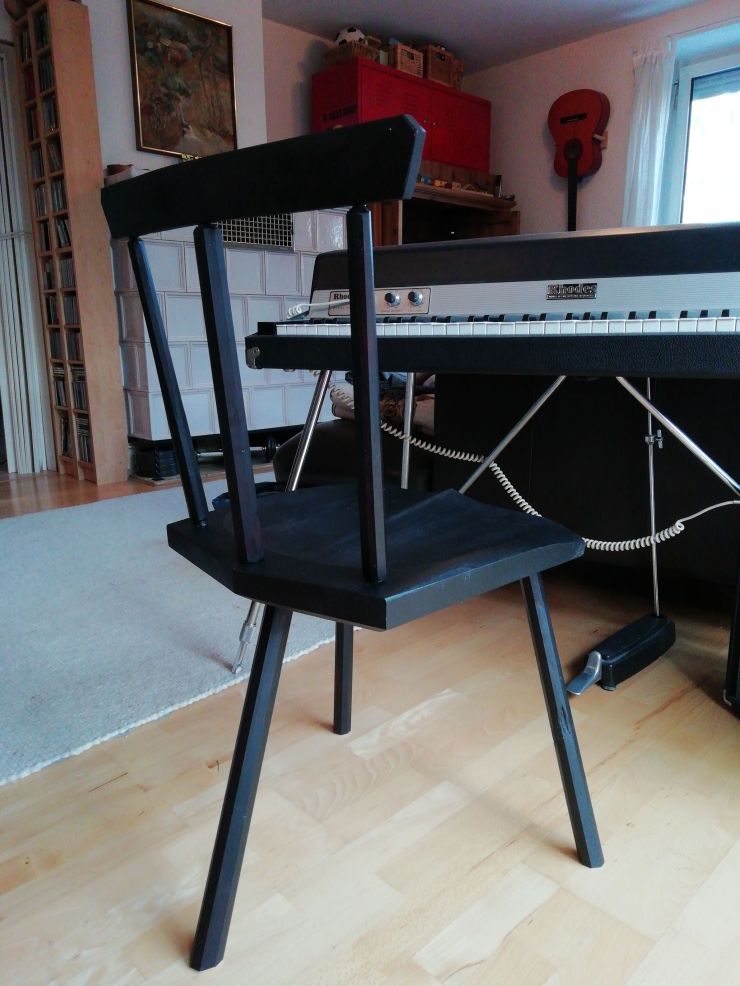I made my first chair a couple of months ago. It was a three-legged chair to go with our Fender Rhodes electric piano. Reflecting back, I think of all the happy hours spent sourcing my materials and getting all the necessary tools together. The actual act of finishing a chair was a special moment. And it was a moment I can best describe as a “healthy addiction”, – I knew I was hooked.

When I think about myself of two or three years ago I had never thought I would be building furniture. Making a chair? No, that’s impossible, only a …. what? can do that. Who or what makes chairs anyway?
Chairs are some of the most common furniture items that exist in the western world. We sit in chairs every day. Humans are quite unique in that way – animals sit or lie down on the ground, some monkeys sit on logs or rocks but no species actually makes chairs, only humans do that.
The chair as a furniture item is therefore very interesting.
You have sat in thousands of chairs in your life, but probably mostly without paying much attention to the chair. But if you were not aware of the chair that’s a good sign for the chair’s comfort.
A lot of people’s chair-sitting experience comes from sitting in mass-produced-over-designed-nice-to-look-at-but-a-pain-in-your-bottoms chairs. Many people haven’t ever sat in a chair that is specifically built to their proportions (neither have I).

The ideal chair is one that has pleasing visual proportions and high comfort.
And there lies the base of the problem. Pleasing to the eye is a subjective term and comfort is highly dependent on the sitter’s features (height, length of legs, size of buttocks, etc.). Thus compromises have to be made when corporations want to make chairs they can sell to lots of people.

Most chairs you can buy have generalized proportions to sit the gross of the population fairly okay – but not great.
The real emphasis lies on the visual design of the chair.
That is exactly why companies like IKEA can be so successful. Their designers know very well what people want to see. Their products are sometimes of dubious quality but their designs appeal to a lot of people.
Furniture is nowadays unfortunately mostly picked with the eyes and not the body.

I have another chair in the planning. It will be a Welsh Stick Chair based on an old chair that we sat on for extended amounts of time during our trip to San Diego.
It was very comfortable and I am glad I took the measurements of it.
More on how I copied the design – without having any measuring tools with me – in this blog post.
-Rudy Everts
Cool! It looks like an interesting chair to model. I look forward to seeing what you come up with.
LikeLike
Thanks Brian! It reminded me a bit of your chair, should be fun to build. I hear armchairs are a bit more difficult than “normal” chairs. Wish me luck!
LikeLike